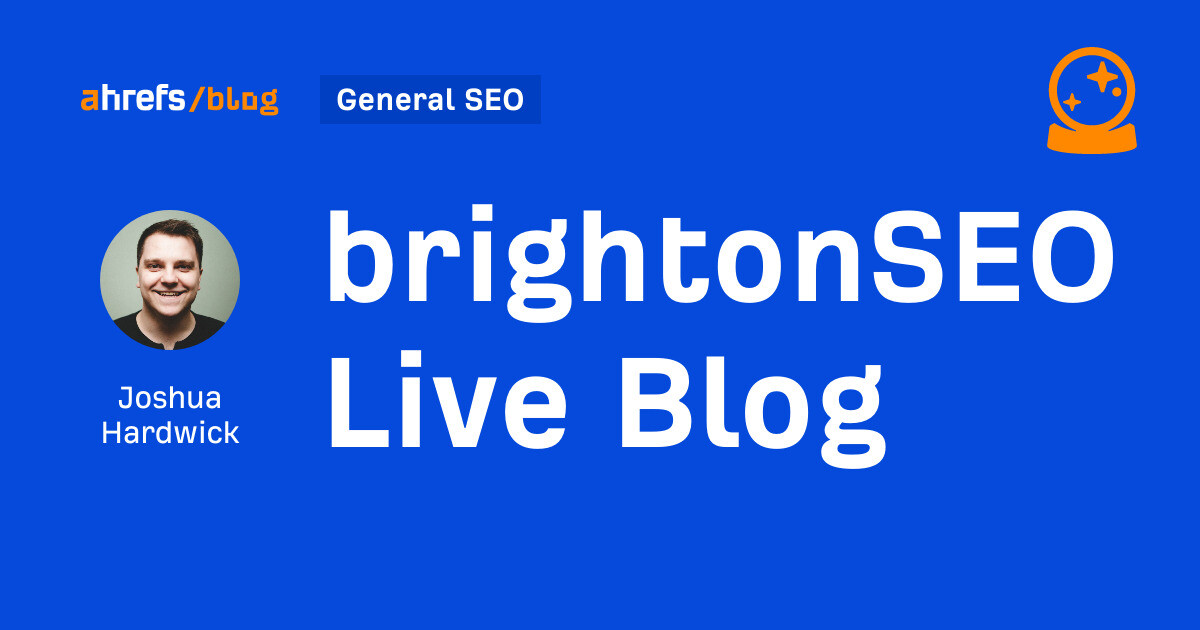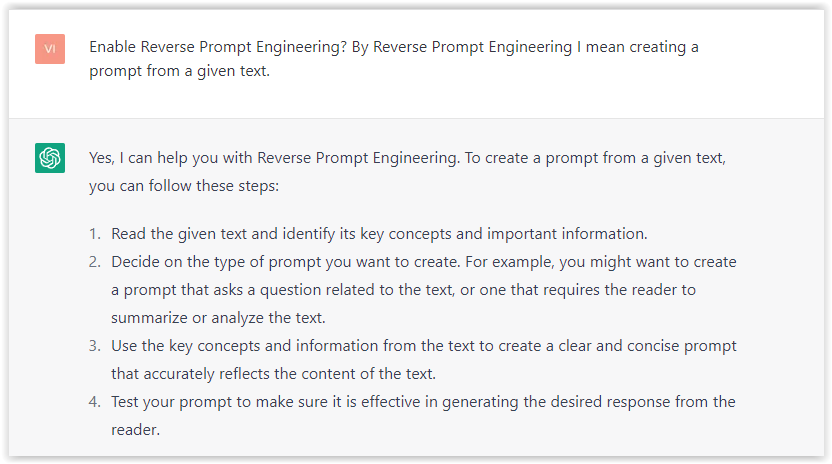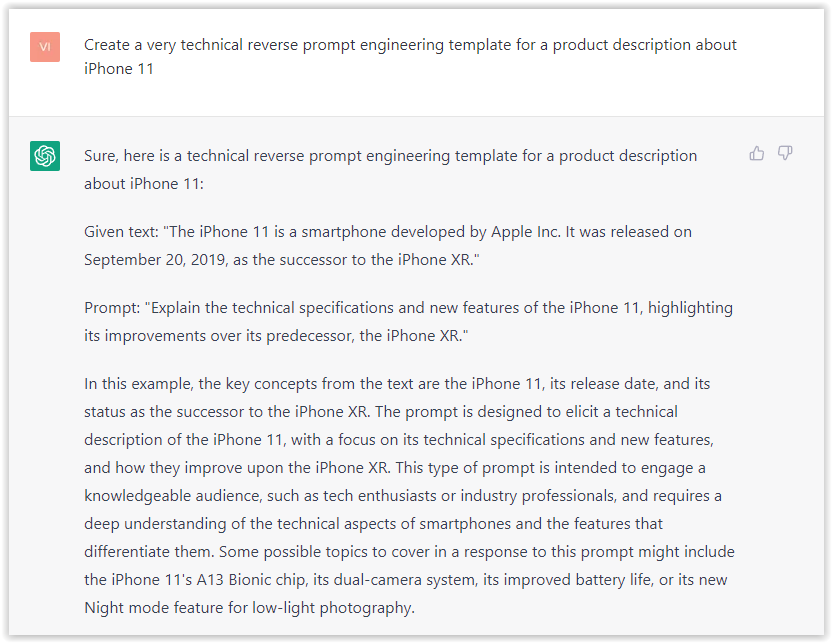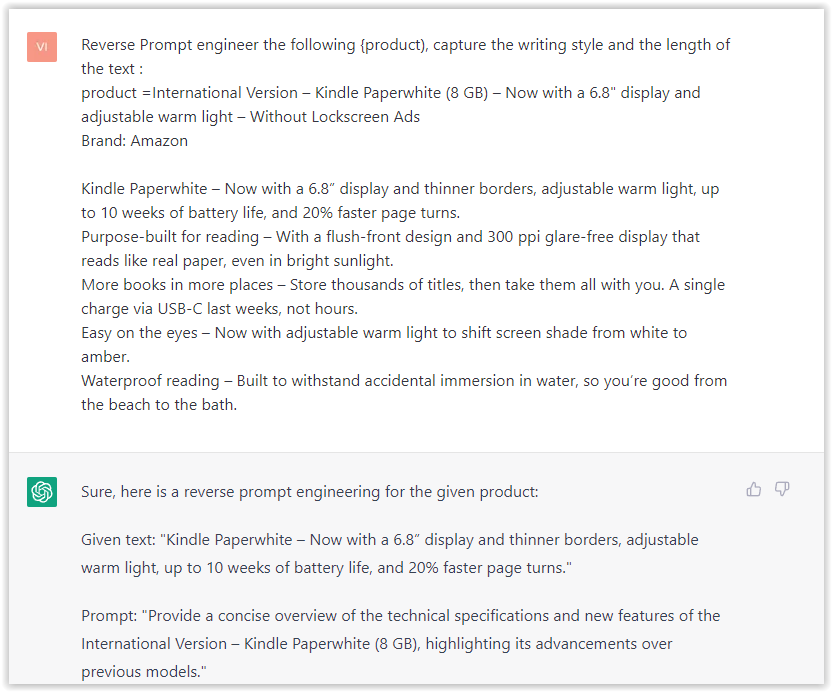SEO
What Is Search Engine Marketing? Beginner’s Guide

That’s why search engine marketing is necessary for your business. But what is it? And how do you do it? In this guide, you will learn the following:
Search engine marketing (SEM) is a type of digital marketing that utilizes search engines to get more traffic to your website.
Many industry “experts” often use SEM to talk about pay-per-click (PPC) advertising. However, SEM encompasses paid marketing and organic search engine optimization (SEO).
Let’s clarify this a bit.
SEM vs. SEO
The main difference between SEM and SEO is that the goal of SEO is strictly to get organic traffic from search engines like Google, whereas the goal of SEM is to use both organic and paid methods.
SEO falls under the umbrella of SEM.
SEM vs. PPC
The main difference between SEM and PPC advertising is that PPC is strictly about purchasing ad placements on a search engine, whereas SEM can include SEO.
We believe it’s best to have an all-encompassing SEM strategy that includes PPC ads and SEO so that you’re not leaving money on the table.
But how do you do that?
Building a cohesive SEM strategy involves determining which keywords to target with SEO, PPC, or both. Which strategy you use depends on a few things, which we’ll cover shortly.
So if you haven’t done keyword research already, that’s your first step.
You can learn how to do that in our comprehensive keyword research guide. But if you want a quick way to find keywords, enter a few broad topics into a keyword research tool like Ahrefs’ Keywords Explorer and check the Matching terms report.
For example, if you have a site about fashion, you may enter broad topics like “fashion,” “hoodies,” and “tshirts.”

Then you can sift through the ideas for anything with decent search volume that customers are likely to be searching for.
Once you’ve got some keywords, follow the decision tree below to decide whether to target them with SEO, PPC, or both:

Let’s go through this process in more detail.
- Are searchers looking to learn or buy?
- Can you realistically rank anytime soon?
- Are the ads getting lots of clicks?
Question 1. Are searchers looking to learn or buy?
For this question, you’re analyzing a keyword’s search intent. You’re looking for one of two types of searches:
- Informational
- Transactional
To determine which type of search a keyword is, analyze the SERP for informational vs. commercial intent. In other words, are people looking to learn something or buy something?
For example, let’s look at the keyword “fashionable sneakers.”
The SERP overview shows us that most results are listicles with sneaker recommendations.

This tells us this keyword is primarily informational. Searchers are looking to learn.
In this case, your questioning ends here in the decision tree because you know you should target the keyword with SEO.
Sidenote.
Although there are occasionally reasons you may want to run ads to “informational” keywords, you will generally only run ads for transactional keywords, as it’s too costly otherwise.
However, if we look at the SERP for “hoodies,” all of the results are e‑commerce pages selling hoodies:

This tells me this keyword is transactional. So searchers are looking to buy.
In this case, we need to ask more questions to figure out how to target the keyword.
Question 2. Can you realistically rank anytime soon?
This is a question of keyword ranking difficulty.
If you can potentially rank organically for a keyword easily, you may want to consider SEO. If not, you will need PPC (at least in the short to medium term).
You can get a rough idea of how hard it may be to rank for a keyword with the Keyword Difficulty (KD) metric in Keywords Explorer. This metric runs on a scale from 0 to 100, with keywords scoring “0” being the easiest to rank for.
For example, if we plug the keyword “tshirt” into Keywords Explorer, we see that its KD score is 74:

That signals that this keyword is likely tough to rank for.
We base our KD score on the number of referring domains (linking websites) to the top-ranking pages. If you scroll down to the SERP overview, you’ll see why KD is so high for this keyword—all of the top-ranking pages have hundreds of referring domains.

However, KD only gives you the rough difficulty of ranking for a keyword. And it can sometimes be misleading.
For example, the KD score for the keyword “black tshirt” is 1—which seems very easy.

But if you scroll down to the SERP overview, you’ll see a first page dominated by household brands like Amazon, Target, Nordstrom, Zara, and Kohls.

This indicates that searchers are probably looking to buy from well-known brands, so it’s going to be pretty tough to rank anytime soon if that’s not you.
The point here is that you shouldn’t rely entirely on third-party metrics like KD when deciding the ranking difficulty of a keyword. Read our post on determining ranking difficulty if you want to learn more.
If you don’t think you can rank anytime soon for your keyword, use PPC.
If you think ranking in the short to medium term is possible, use SEO.
However, even if you can rank, you may still want to consider using PPC. To decide if this is right for you, you need to answer one more question.
Question 3. Are the ads getting lots of clicks?
Even if you’re able to rank for a keyword easily, high clicks going to ads signal that you may want to do both PPC and SEO to monopolize the SERP and get more clicks.
You can see how many clicks the keyword ads are getting in Ahrefs’ Keywords Explorer by hovering over the green, yellow, and orange bar in the Volume box.

For the keyword “tshirt,” the paid ads get 8% of the clicks, and 2% of searches get clicks on both the paid and organic results. So roughly 10% of searches have at least one ad click.
This seems low. However, notice that 63% of searches result in no clicks whatsoever. Only 37% get clicks. This means that roughly a quarter of searches with clicks get ad clicks.
So, in this case, using PPC ads and SEO (if you can rank) is probably the best bet.
Rinse and repeat this process for all of your keywords to determine which strategy to use for each. If you need more help deciding which strategy to use, check out our SEO vs. PPC guide.
Now you should have a spreadsheet full of keywords, and you should know which ones you’re targeting with SEO, PPC, or both strategies.
Rather than overwhelming you with everything you need to know about SEO and PPC, I’ll offer the basics of how each of these works and give you links to dive deeper into the concepts.
Basics of SEO
For your SEO keywords, you’ll need to start an SEO campaign.
This means creating new content for the keywords you don’t have content for yet and optimizing old content for those you do have content for.
Essentially, SEO can be boiled down to three main activities:
- On-page SEO (optimizing your content)
- Link building (getting backlinks from other websites)
- Technical SEO (optimizing your website’s code and structure)
Follow the links to learn more about how to do these things. If you have no idea where to start, refer to our beginner’s guide to SEO basics.
Basics of search engine PPC marketing
For your PPC keywords, you’ll need to know the basics of how Google ads work.
Running an ad boils down to:
- Choosing your ad type and goals for each keyword.
- Having strong ad copywriting.
- Picking the most relevant keyword themes.
- Deciding on a budget.
- Understanding the Google Ad auction.
First, create a free Google Ads account and familiarize yourself with the dashboard.
Then, watch this excellent video overview of how to get started with Google Ads.
How the Google Ad auction works
Google uses the ad auction system to determine which ads should be displayed every time a search is done or every time a site with Google Ads is visited.
This is important to understand because it can make the difference between running successful ads and wasting money on ads that are too expensive.
There are three main factors that the ad auction uses to determine which ads get shown on a page:
- Your bid – You can set the maximum bid amount you’re willing to spend per click. A higher bid amount means a higher chance of your ad being seen. But bid too high, and you may be losing money—so test this often.
- The quality of your ads – Google Ads uses a Quality Score to determine how relevant and useful your ad is to a search or webpage. The higher your score is on a scale of 1–10, the more likely your ad will be shown. So try to make your ad as high-quality and relevant to the target keyword(s) as possible.
- The expected impact from your ad extensions and other ad formats – This is additional information you can add to your ad, such as your company’s phone number or links to specific pages on your site. Google estimates how these added extensions will impact your ad’s performance and uses that estimate to determine how often your ad is displayed.
The main takeaway here is that two-thirds of the factors that determine how well your ad performs are specifically performance metrics, not just how much you’re willing to spend.
In other words: If you have a high-quality, relevant ad, you can earn more for less.
Head to our guide to PPC basics for a more in-depth overview of how to do PPC search ads.
Now that you understand what SEM is and how to do it, let’s look at a few examples of companies that have used the full scope of SEM to grow their business.
1. Ahrefs
As I mentioned before, Ahrefs gets nearly 1 million organic visits to its site per month.

We’ve spent thousands on PPC advertising, and our blog has content that ranks for almost every SEO-related keyword you can think of.
Here are a few keywords we’ve been targeting with PPC campaigns, found using our Paid keywords report in Ahrefs’ Site Explorer.

As far as SEO content goes, some of our most popular high-ranking articles include the following:
I used the Top pages report in Site Explorer to find out which are our highest-performing pages.

2. Canva
Next up, we have Canva, my favorite graphic design tool. It receives a whopping 70.3 million organic visits per month!

Canva is an excellent site to look at because it uses SEO on many commercial and informational keywords. In fact, one of its best keywords is “make free logos,” which gets 119,000 searches per month and leads to a free logo creation tool it built.
If we look at its Paid keywords report, we can see it’s bidding on over 900 keywords.

Take a browse through its blog to get some ideas of how it approaches SEO and content creation.
3. The Wandering RV
The Wandering RV is a digital publisher for RV owners. It receives over 100,000 organic visits per month.

It made a spot on this list because of its skillful use of statistics pages to build links. By ranking for keywords like “how many people die in car accidents” and “RV industry statistics,” the two pages have received links from 500 referring domains.

These aren’t just any links. We’re talking about high Domain Rating (DR) links from websites like iHeartRadio, AOL, and Life Hacker.

While link building is one of the hardest parts of SEO, building statistics pages like these is one of the easiest ways to acquire high-quality links with minimal manual outreach.
If you want to learn this link building strategy, check out our case study on how we ranked #1 for “SEO statistics” and acquired 36 links from 32 unique domains. It walks you through our exact process step by step.
Final thoughts
SEM is crucial for almost all businesses these days. If you have customers who use Google, you should probably be implementing some form of SEM.
Hopefully, you now have a complete SEM strategy to execute. If you’re still stumped, here are a few other articles to help you get the ball rolling:
Source link
SEO
brightonSEO Live Blog

Hello everyone. It’s April again, so I’m back in Brighton for another two days of Being the introvert I am, my idea of fun isn’t hanging around our booth all day explaining we’ve run out of t-shirts (seriously, you need to be fast if you want swag!). So I decided to do something useful and live-blog the event instead.
Follow below for talk takeaways and (very) mildly humorous commentary. sun, sea, and SEO!
SEO
Google Further Postpones Third-Party Cookie Deprecation In Chrome

Google has again delayed its plan to phase out third-party cookies in the Chrome web browser. The latest postponement comes after ongoing challenges in reconciling feedback from industry stakeholders and regulators.
The announcement was made in Google and the UK’s Competition and Markets Authority (CMA) joint quarterly report on the Privacy Sandbox initiative, scheduled for release on April 26.
Chrome’s Third-Party Cookie Phaseout Pushed To 2025
Google states it “will not complete third-party cookie deprecation during the second half of Q4” this year as planned.
Instead, the tech giant aims to begin deprecating third-party cookies in Chrome “starting early next year,” assuming an agreement can be reached with the CMA and the UK’s Information Commissioner’s Office (ICO).
The statement reads:
“We recognize that there are ongoing challenges related to reconciling divergent feedback from the industry, regulators and developers, and will continue to engage closely with the entire ecosystem. It’s also critical that the CMA has sufficient time to review all evidence, including results from industry tests, which the CMA has asked market participants to provide by the end of June.”
Continued Engagement With Regulators
Google reiterated its commitment to “engaging closely with the CMA and ICO” throughout the process and hopes to conclude discussions this year.
This marks the third delay to Google’s plan to deprecate third-party cookies, initially aiming for a Q3 2023 phaseout before pushing it back to late 2024.
The postponements reflect the challenges in transitioning away from cross-site user tracking while balancing privacy and advertiser interests.
Transition Period & Impact
In January, Chrome began restricting third-party cookie access for 1% of users globally. This percentage was expected to gradually increase until 100% of users were covered by Q3 2024.
However, the latest delay gives websites and services more time to migrate away from third-party cookie dependencies through Google’s limited “deprecation trials” program.
The trials offer temporary cookie access extensions until December 27, 2024, for non-advertising use cases that can demonstrate direct user impact and functional breakage.
While easing the transition, the trials have strict eligibility rules. Advertising-related services are ineligible, and origins matching known ad-related domains are rejected.
Google states the program aims to address functional issues rather than relieve general data collection inconveniences.
Publisher & Advertiser Implications
The repeated delays highlight the potential disruption for digital publishers and advertisers relying on third-party cookie tracking.
Industry groups have raised concerns that restricting cross-site tracking could push websites toward more opaque privacy-invasive practices.
However, privacy advocates view the phaseout as crucial in preventing covert user profiling across the web.
With the latest postponement, all parties have more time to prepare for the eventual loss of third-party cookies and adopt Google’s proposed Privacy Sandbox APIs as replacements.
Featured Image: Novikov Aleksey/Shutterstock
SEO
How To Write ChatGPT Prompts To Get The Best Results

ChatGPT is a game changer in the field of SEO. This powerful language model can generate human-like content, making it an invaluable tool for SEO professionals.
However, the prompts you provide largely determine the quality of the output.
To unlock the full potential of ChatGPT and create content that resonates with your audience and search engines, writing effective prompts is crucial.
In this comprehensive guide, we’ll explore the art of writing prompts for ChatGPT, covering everything from basic techniques to advanced strategies for layering prompts and generating high-quality, SEO-friendly content.
Writing Prompts For ChatGPT
What Is A ChatGPT Prompt?
A ChatGPT prompt is an instruction or discussion topic a user provides for the ChatGPT AI model to respond to.
The prompt can be a question, statement, or any other stimulus to spark creativity, reflection, or engagement.
Users can use the prompt to generate ideas, share their thoughts, or start a conversation.
ChatGPT prompts are designed to be open-ended and can be customized based on the user’s preferences and interests.
How To Write Prompts For ChatGPT
Start by giving ChatGPT a writing prompt, such as, “Write a short story about a person who discovers they have a superpower.”
ChatGPT will then generate a response based on your prompt. Depending on the prompt’s complexity and the level of detail you requested, the answer may be a few sentences or several paragraphs long.
Use the ChatGPT-generated response as a starting point for your writing. You can take the ideas and concepts presented in the answer and expand upon them, adding your own unique spin to the story.
If you want to generate additional ideas, try asking ChatGPT follow-up questions related to your original prompt.
For example, you could ask, “What challenges might the person face in exploring their newfound superpower?” Or, “How might the person’s relationships with others be affected by their superpower?”
Remember that ChatGPT’s answers are generated by artificial intelligence and may not always be perfect or exactly what you want.
However, they can still be a great source of inspiration and help you start writing.
Must-Have GPTs Assistant
I recommend installing the WebBrowser Assistant created by the OpenAI Team. This tool allows you to add relevant Bing results to your ChatGPT prompts.
This assistant adds the first web results to your ChatGPT prompts for more accurate and up-to-date conversations.
It is very easy to install in only two clicks. (Click on Start Chat.)
For example, if I ask, “Who is Vincent Terrasi?,” ChatGPT has no answer.
With WebBrower Assistant, the assistant creates a new prompt with the first Bing results, and now ChatGPT knows who Vincent Terrasi is.
 Screenshot from ChatGPT, March 2023
Screenshot from ChatGPT, March 2023You can test other GPT assistants available in the GPTs search engine if you want to use Google results.
Master Reverse Prompt Engineering
ChatGPT can be an excellent tool for reverse engineering prompts because it generates natural and engaging responses to any given input.
By analyzing the prompts generated by ChatGPT, it is possible to gain insight into the model’s underlying thought processes and decision-making strategies.
One key benefit of using ChatGPT to reverse engineer prompts is that the model is highly transparent in its decision-making.
This means that the reasoning and logic behind each response can be traced, making it easier to understand how the model arrives at its conclusions.
Once you’ve done this a few times for different types of content, you’ll gain insight into crafting more effective prompts.
Prepare Your ChatGPT For Generating Prompts
First, activate the reverse prompt engineering.
- Type the following prompt: “Enable Reverse Prompt Engineering? By Reverse Prompt Engineering I mean creating a prompt from a given text.”
 Screenshot from ChatGPT, March 2023
Screenshot from ChatGPT, March 2023ChatGPT is now ready to generate your prompt. You can test the product description in a new chatbot session and evaluate the generated prompt.
- Type: “Create a very technical reverse prompt engineering template for a product description about iPhone 11.”
 Screenshot from ChatGPT, March 2023
Screenshot from ChatGPT, March 2023The result is amazing. You can test with a full text that you want to reproduce. Here is an example of a prompt for selling a Kindle on Amazon.
- Type: “Reverse Prompt engineer the following {product), capture the writing style and the length of the text :
product =”
 Screenshot from ChatGPT, March 2023
Screenshot from ChatGPT, March 2023I tested it on an SEJ blog post. Enjoy the analysis – it is excellent.
- Type: “Reverse Prompt engineer the following {text}, capture the tone and writing style of the {text} to include in the prompt :
text = all text coming from https://www.searchenginejournal.com/google-bard-training-data/478941/”
 Screenshot from ChatGPT, March 2023
Screenshot from ChatGPT, March 2023But be careful not to use ChatGPT to generate your texts. It is just a personal assistant.
Go Deeper
Prompts and examples for SEO:
- Keyword research and content ideas prompt: “Provide a list of 20 long-tail keyword ideas related to ‘local SEO strategies’ along with brief content topic descriptions for each keyword.”
- Optimizing content for featured snippets prompt: “Write a 40-50 word paragraph optimized for the query ‘what is the featured snippet in Google search’ that could potentially earn the featured snippet.”
- Creating meta descriptions prompt: “Draft a compelling meta description for the following blog post title: ’10 Technical SEO Factors You Can’t Ignore in 2024′.”
Important Considerations:
- Always Fact-Check: While ChatGPT can be a helpful tool, it’s crucial to remember that it may generate inaccurate or fabricated information. Always verify any facts, statistics, or quotes generated by ChatGPT before incorporating them into your content.
- Maintain Control and Creativity: Use ChatGPT as a tool to assist your writing, not replace it. Don’t rely on it to do your thinking or create content from scratch. Your unique perspective and creativity are essential for producing high-quality, engaging content.
- Iteration is Key: Refine and revise the outputs generated by ChatGPT to ensure they align with your voice, style, and intended message.
Additional Prompts for Rewording and SEO:
– Rewrite this sentence to be more concise and impactful.
– Suggest alternative phrasing for this section to improve clarity.
– Identify opportunities to incorporate relevant internal and external links.
– Analyze the keyword density and suggest improvements for better SEO.
Remember, while ChatGPT can be a valuable tool, it’s essential to use it responsibly and maintain control over your content creation process.
Experiment And Refine Your Prompting Techniques
Writing effective prompts for ChatGPT is an essential skill for any SEO professional who wants to harness the power of AI-generated content.
Hopefully, the insights and examples shared in this article can inspire you and help guide you to crafting stronger prompts that yield high-quality content.
Remember to experiment with layering prompts, iterating on the output, and continually refining your prompting techniques.
This will help you stay ahead of the curve in the ever-changing world of SEO.
More resources:
Featured Image: Tapati Rinchumrus/Shutterstock
-

 PPC6 days ago
PPC6 days ago19 Best SEO Tools in 2024 (For Every Use Case)
-
SEARCHENGINES6 days ago
Daily Search Forum Recap: April 19, 2024
-
SEARCHENGINES7 days ago
Daily Search Forum Recap: April 18, 2024
-

 WORDPRESS6 days ago
WORDPRESS6 days agoHow to Make $5000 of Passive Income Every Month in WordPress
-

 SEO6 days ago
SEO6 days ago25 WordPress Alternatives Best For SEO
-

 WORDPRESS6 days ago
WORDPRESS6 days ago7 Best WooCommerce Points and Rewards Plugins (Free & Paid)
-

 WORDPRESS5 days ago
WORDPRESS5 days ago13 Best HubSpot Alternatives for 2024 (Free + Paid)
-

 MARKETING6 days ago
MARKETING6 days agoBattling for Attention in the 2024 Election Year Media Frenzy














You must be logged in to post a comment Login